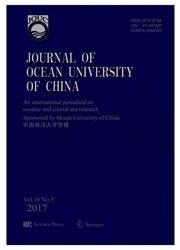

 中文摘要:
中文摘要:
Using microalgae( SA),artificial feed( AF),Brachionus plicatilis( BP) and brine shrimp larvae( BS),four diets including SA + AF,SA + AF + BP,SA + AF + BS and SA + AF + BP + BS were formulated and used to rear Fenneropenaeus chinensis larvae. The fertilized eggs fed with SA + AF were divided into disinfection group with iodophor and untreated group,and the fertilized eggs fed with other diets were all disinfected with iodophor. The survival rates,body weight and WSSV load of post larvae at each stage were compared. The results showed that there was no significant difference in the survival rate of prawns at the N-Z stage by feeding with different diets( P > 0. 05),but the survival rate of prawns fed with BP was higher than others( P < 0. 01) at the Z-P stage. The body weight of post larvae( P10) fed with SA + AF + BP was less than that fed with SA + AF + BP + BS( P <0. 01). The WSSV load of prawns( 10. 52 ±3. 3 copies/ng DNA) fed with SA + AF were significantly lower than that of other treatments( P < 0. 05) at the P10 stage. During the P11- P60 stage,four kinds of diets,including Ruditapes philippinarum foot muscle( CF) + artificial feed( AF),R. philippinarum foot muscle radiated by60 Co γ-ray( RCF) + artificial feed( AF),potassium permanganate-disinfected R. philippinarum foot muscle( DCF) + artificial feed( AF) and artificial feed( AF),were used to feed prawns. The prawns fed with CF + AF gained the greatest increase of body weight and body length,but had no significant difference with that fed with AF( P > 0. 05); prawns fed with CF + AF and AF had significant difference with the other two groups( P < 0. 05). The survival rates of prawns fed with four different diets had no significant difference with each other( P > 0. 05). WSSV artificial infection test showed that the accumulated mortality of prawns fed with four diets were higher than 90%,and the difference was not significant( P > 0. 05).
 同期刊论文项目
同期刊论文项目
 同项目期刊论文
同项目期刊论文
 期刊信息
期刊信息
